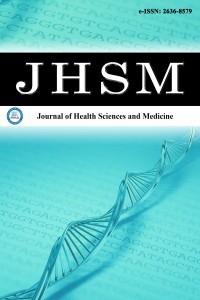
Journal of Health Sciences and Medicine
Yazarlar: Ebru YILMAZ, Memnune ARSLAN, Şefika AKYOL, Alper ÖZCAN, Gökmen ZARARSIZ, Ümmühan ABDULREZZAK, Olgun KONTAŞ, Özlem CANÖZ, Ekrem ÜNAL, Musa KARAKÜKÇÜ
Konular:Sağlık Bilimleri ve Hizmetleri
DOI:10.32322/jhsm.984394
Anahtar Kelimeler:Hodgkin lymphoma,Children,Radiotherapy
Özet: Aim: Hodgkin lymphoma (HL) constitutes 40% of childhood lymphomas and approximately 6% of all childhood cancers. It is tried to achieve cure with combined treatment modalities consisting of chemotherapy, radiotherapy, monoclonal antibodies, and new treatment agents such as nivolumab. Radiotherapy-related infertility, secondary cancer, thyroid dysfunction, cardiovascular diseases, pulmonary fibrosis, and local skin reactions can be seen in the pediatric age group with a long life expectancy. In this article, pediatric patients diagnosed with Hodgkin lymphoma without the use of radiotherapy in the treatment were evaluated retrospectively and the survival results were reported as a single-center experience. Material and Method: The patients with Hodgkin Lymphoma in the Pediatrics Hematology-Oncology Center at Erciyes University between January 2010 and December 2019 were included in the study and the data of the patients were evaluated retrospectively. Results: In 68 pediatric patients with a mean age of 10.7 (±4.6) years, the male/female ratio was 1.3. The most detected finding at the time of diagnosis was cervical lymphadenopathy (83.8%). The most common mixed cellular subtype was identified (48.5%). Stage I-II disease was observed in 38.3% of the patients, and stage III-IV disease was observed in 61.7% of the patients. The median follow-up period of the patients was 61 (range, 8.3-161.6) months. Disease-free survival and overall survival were 85.3% and 94.1%, respectively. Treatment modalities to be used in this disease group, which has a high chance of cure after cytotoxic treatment, should be selected considering treatment-related long-term complications. Conclusion: Acceptable good results obtained without radiotherapy are satisfactory and the chance of curative success will increase with the addition of new target agents to the treatment.